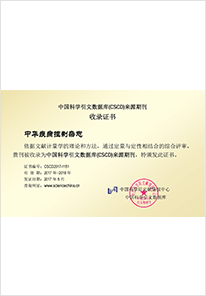2022 Vol. 26, No. 3
Display Method:
2022, 26(3): 249-250.
doi: 10.16462/j.cnki.zhjbkz.2022.03.001
Abstract:
2022, 26(3): 257-262.
doi: 10.16462/j.cnki.zhjbkz.2022.03.003
Abstract:
2022, 26(3): 269-273.
doi: 10.16462/j.cnki.zhjbkz.2022.03.005
Abstract:
2022, 26(3): 280-284.
doi: 10.16462/j.cnki.zhjbkz.2022.03.007
Abstract:
2022, 26(3): 290-296.
doi: 10.16462/j.cnki.zhjbkz.2022.03.009
Abstract:
2022, 26(3): 297-301.
doi: 10.16462/j.cnki.zhjbkz.2022.03.010
Abstract:
2022, 26(3): 309-314.
doi: 10.16462/j.cnki.zhjbkz.2022.03.012
Abstract:
2022, 26(3): 315-324.
doi: 10.16462/j.cnki.zhjbkz.2022.03.013
Abstract:
2022, 26(3): 325-330.
doi: 10.16462/j.cnki.zhjbkz.2022.03.014
Abstract:
2022, 26(3): 331-336.
doi: 10.16462/j.cnki.zhjbkz.2022.03.015
Abstract:
2022, 26(3): 337-342.
doi: 10.16462/j.cnki.zhjbkz.2022.03.016
Abstract:
2022, 26(3): 343-347.
doi: 10.16462/j.cnki.zhjbkz.2022.03.017
Abstract:
Prevalence and influencing factors of obesity and abdominal obesity among adults in Shenzhen in 2018
2022, 26(3): 347-350.
doi: 10.16462/j.cnki.zhjbkz.2022.03.018
Abstract:
2022, 26(3): 351-356.
doi: 10.16462/j.cnki.zhjbkz.2022.03.019
Abstract:
2022, 26(3): 357-361.
doi: 10.16462/j.cnki.zhjbkz.2022.03.020
Abstract:
2022, 26(3): 367-372.
doi: 10.16462/j.cnki.zhjbkz.2022.03.022
Abstract:


 Email alert
Email alert RSS
RSS Abstract
Abstract HTML
HTML PDF
PDF





